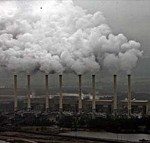The impact of the carbon price is starting to emerge in the generation profiles of Australia’s electricity network, combining with the renewable energy target to achieve a reasonably significant reduction in emissions from the energy sector this past year.
That is the conclusion of energy research group Cedex, which released its updated report for November, noting that the reduction in demand from black coal generators, caused by the combined impact of the renewable energy target and falling demand, had now extended to brown coal generators.
“In the last few months the burden (of reduced output) has shifted to the more emissions intensive Victorian brown coal generators,” Cedex wrote in its latest report. “Moreover, the output reductions are happening at the three most emissions intensive power stations: Hazelwood, Yallourn and Morwell. Perhaps the carbon price is beginning to lend the RET a hand.”
The report found that annualised energy emissions in Australia had fallen by 2 million tonnes of CO2e lower than in September, a fall of 0.6 per cent in just three months – and these were driven almost entirely by emission reductions from electricity generation. The energy sector accounts for more than half of Australia’s total emissions, excluding land-use changes.
The report also notes a reduction in electricity demand, which to the end of November has fallen dramatically in some states, with Victoria 11 per cent below 2008/09 levels, and NSW was down 8 per cent. South Australia and Tasmania each fell 4 per cent, while Queensland was down 2 per cent.
Cedex described these changes as “unprecedented” in the entire 120-year history of the electricity supply industry in Australia. “There can be little doubt that electricity consumers spurred by a combination of government energy efficiency measures, community awareness, and higher prices, are responding by taking up the many options available to increase the efficiency of electricity use and to change their energy using behaviour to reduce unnecessary consumption. “
It said that solar PV only had a minor role in the reduction in demand – accounting for 0.7TWh out of the total 4TWh reduction in NSW, for instance – quoting AEMO data from 2011. But the amount of installations has grown more than 50 per cent since then.
However, it was clear that gas, wind and hydro generation now made up more than 25 per cent of the country’s generation. “The result has been that coal-fired generators are supplying less electricity, with consequent reductions in emissions,” Cedex said.












